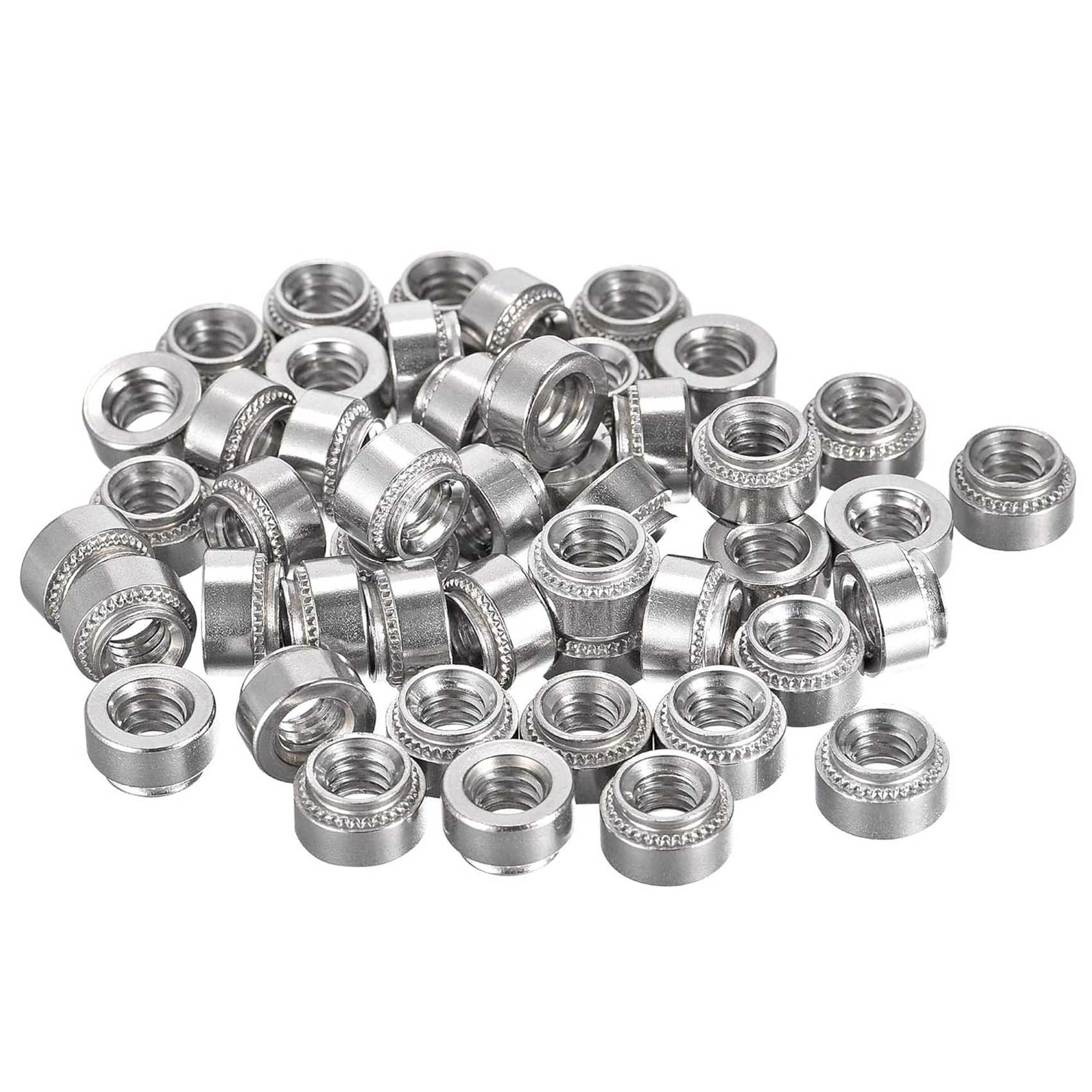SS/MS Clinch Nuts, also known as self-clinching nuts, are threaded fasteners designed for permanent installation in metal sheets or panels. These nuts provide a strong and reliable threaded connection without the need for welding or additional hardware. Here are the details about SS/MS Clinch Nuts:
Material:
- Stainless Steel (SS): Offers excellent corrosion resistance and durability, making it suitable for outdoor or corrosive environments.
- Mild Steel (MS): Provides strength and cost-effectiveness, commonly used in indoor applications or where corrosion resistance is not the primary concern.
Design:
- Clinching Feature: Clinch nuts have a specially designed clinching feature, typically in the form of serrations or knurls on the body, which allows them to be permanently embedded into a metal sheet or panel.
- Threaded Body: Clinch nuts have internal threads that allow them to accept standard screws or bolts, forming a secure and reliable threaded connection.
- Flat or Low Profile Head: The head of the clinch nut is usually flat or low profile, allowing it to be installed flush with the surface of the metal sheet or panel.
Installation:
- Clinch nuts are installed by inserting them into a pre-drilled or punched hole in the metal sheet or panel.
- During installation, a press or other suitable tool is used to apply pressure to the clinching feature, causing it to deform and securely embed the nut into the metal.
- Once installed, the clinch nut provides a permanent and strong threaded attachment point for subsequent assembly operations.
Sizes:
- Available in various sizes and thread types to accommodate different screw or bolt diameters and thread pitches.
- Common thread sizes include metric and standard (imperial) measurements.
Applications:
- Widely used in industries such as electronics, automotive, aerospace, and manufacturing for providing threaded attachment points in metal sheets or panels.
- Suitable for applications where welding or other fastening methods are not feasible or desirable.
- Used in assemblies where a strong and reliable threaded connection is required, such as mounting components, brackets, or panels.
Advantages:
- Provides a strong and permanent threaded attachment point in metal sheets or panels.
- Eliminates the need for welding, adhesive bonding, or additional hardware, reducing assembly time and cost.
- Creates a flush or low-profile installation, which improves the aesthetics and minimizes protrusions from the surface.
Limitations:
- Requires access to both sides of the metal sheet or panel for installation.
- Installation process may require specialized equipment or tooling, depending on the size and material thickness of the metal.
